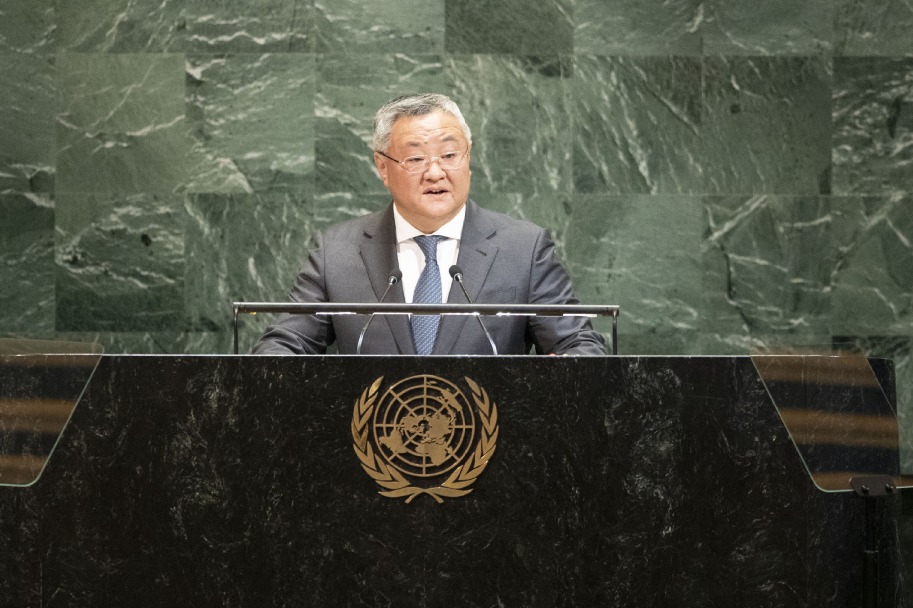California-China effort seen as key on carbon

California can play a role in helping the US and China achieve carbon neutrality amid a chill in bilateral relations, the state's former governor said.
"We are mutually vulnerable to climate change … we have a shared goal and shared opportunity to work together to address climate change," said former California governor Jerry Brown at a recent online forum hosted by the University of California, Berkeley.
As governor, Brown visited China in 2017. During that trip, he met with Chinese President Xi Jinping and discussed climate change and other topics, when former US president Donald Trump renounced efforts to battle global emissions.
"I've always been interested in the California-China relationship and climate technology," said Brown, chair of the California China Climate Institute.
"We are very much engaged and related, in the most intimate way, with China. Therefore, we have to figure out how to work this relationship and not exacerbate it in a way that could lead to a conflict," he said. "And if the conflict occurred, it could be very, very dangerous."
Brown said the US and China have a shared responsibility to fight global climate change.
"The US has put more CO2 and other greenhouse gases into the atmosphere than anybody else — America is the number one contributor, almost a quarter of all the CO2 in the atmosphere. So we have a deep responsibility in terms of mitigating that," he said.
He noted that China and the US are now together emitting around 40 percent of all CO2.
California also faces significant climate problems, including drought and reduced humidity, which has caused devastating wildfires in the state, said Brown, adding that wildfires burned 4 million acres last year.
"We are in a world where we're sharing the effects of climate change; we're sharing the contribution and exacerbation of climate change by our industrial activity in ways of life; and we share that with the Chinese as well as other major industrial countries," said Brown.
"But together, China and the US have a great opportunity to solve their common problem — the habitat destruction, the species extinction, the acidification of the ocean," he said.
When national action has been on-again, off-again in some countries like the US, states and cities have stepped up to play a major role, said Dan Farber, professor of environmental law at UC Berkeley.
"A state like California may be able to work with China at times when the federal government may be hindered by unrelated geopolitical issues, or frankly by ideology," he said.
One of the ongoing projects at the California China Climate Institute is to find lessons from California's experience, said Farber. For instance, California's cap and trade system could be useful as China begins to implant its own proposed emissions trading system, he said.
More than 45 countries and 30 cities, states and provinces have pursued carbon-pricing programs. California and China are among the jurisdictions that have established such programs.
California is a pioneer on a number of climate change policies, including on carbon markets. The state's cap-and-trade program has been operating since 2013 and is one of the largest carbon markets in the world.
China announced its emissions-trading system in 2011 and two years later established regional pilot programs in Beijing, Chongqing, Shanghai and other cities. Those regional pilot programs will gradually be incorporated into the national system, which is expected to become the largest market in the world.
As these carbon markets mature, it's critical that California and China explore ways to learn from one another, said Farber.
In fact, exchanges between climate officials from California and China started in 2013, according to the California China Climate Institute. California has hosted dozens of visiting delegations, webinars and video conferences with Chinese officials, while California delegations have traveled to China both to share information about California's program and to learn more about China's developing carbon market.
Another project is the carbon neutrality project, which is aimed at trying to scope out for both countries the stages for reaching carbon neutrality over the next few decades and the kinds of technologies that will be needed at various stages, said Farber.
California has established targets for carbon neutrality by 2045; the US and China have pledged to achieve carbon neutrality by 2050 and 2060, respectively. To achieve those goals, the institute has initiated the project to build dialogue between agencies in California and China on carbon neutrality and to develop a common framework for policy coordination.
"From bulk long-term storage of electricity, decarbonizing heavy industries, to removing carbon from the atmosphere, there are going to be a lot of very big opportunities for cooperation on these efforts," he said.































